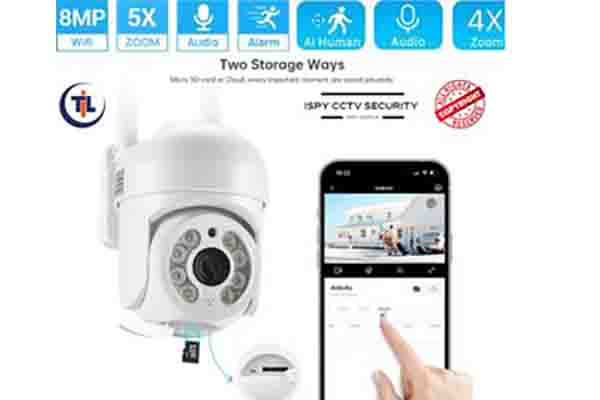Wireless CCTV, Monitor your premises remotely
Wireless CCTV camera systems, also known as wireless surveillance systems, have gained significant popularity in recent years due to their convenience and ease of installation. These systems utilize wireless technology to transmit video and audio signals from the cameras to a receiver or a centralized monitoring station. Let’s explore how wireless CCTV camera systems work and discuss their pros and cons.
How wireless CCTV camera systems work:
- Camera capture: Wireless CCTV cameras capture video and audio signals just like traditional wired cameras. They use built-in sensors and lenses to record the footage.
- Wireless transmission: Instead of using physical cables, wireless CCTV cameras transmit the video and audio signals through radio frequencies or Wi-Fi. These signals are typically encrypted to ensure secure communication.
- Receiver or monitoring station: The wireless signals are received by a receiver or a centralized monitoring station, which is connected to a display unit or a recording device. This allows the user to monitor the live footage or review the recorded videos.
Pros of wireless CCTV camera systems:
- Easy installation: Wireless CCTV camera systems are relatively easy to install compared to wired systems since there is no need for extensive cable routing. This makes them suitable for both indoor and outdoor applications, and they can be installed in areas where running cables is impractical or challenging.
- Flexibility and scalability: Wireless systems offer greater flexibility in camera placement. They can be easily repositioned or relocated without the need for rewiring. Additionally, wireless systems are scalable, allowing for the addition of more cameras as needed.
- Remote monitoring: Wireless CCTV camera systems enable remote monitoring, allowing users to access live video feeds or recorded footage from anywhere using a smartphone, tablet, or computer. This provides convenience and peace of mind, especially for homeowners and business owners who are away from their properties.
- Reduced vulnerability to tampering: Since wireless systems do not have physical cables, they are less susceptible to tampering or sabotage. Intruders cannot simply cut the cables to disable the cameras, enhancing the overall security of the system.
Cons of wireless CCTV camera systems:
- Limited range: Wireless systems may have limitations in terms of range, especially in environments with obstacles such as walls or large distances between the cameras and the receiver. The range can vary depending on the specific wireless technology used and the surrounding conditions.
- Interference: Wireless systems are susceptible to interference from other devices operating on similar frequencies, such as Wi-Fi routers or cordless phones. Interference can result in degraded video quality or signal loss. However, modern wireless CCTV systems often utilize advanced frequency-hopping or encryption techniques to minimize interference.
- Power requirements: Wireless CCTV cameras require a power source, typically in the form of batteries or wired connections. Battery-powered cameras may require frequent battery changes or recharging, which can be inconvenient and result in downtime if not managed properly.
- Bandwidth limitations: Transmitting video wirelessly requires sufficient bandwidth. If multiple cameras are connected to the same network, the available bandwidth may be divided among them, potentially affecting video quality or introducing latency. Therefore, it’s important to ensure that the network can handle the data requirements of the cameras.
In summary, wireless CCTV camera systems offer easy installation, flexibility, and remote monitoring capabilities. They are particularly suitable for situations where running cables is challenging or impractical. However, they may have limitations in terms of range, susceptibility to interference, power requirements, and potential bandwidth limitations. It’s important to consider these factors and select a wireless CCTV system that meets your specific needs and requirements.

